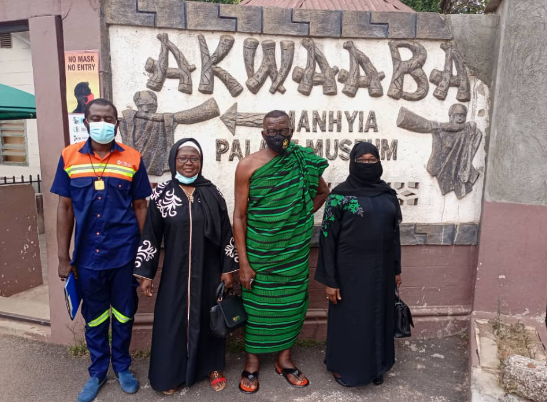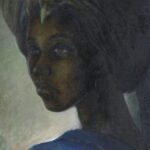Nana Osei Bonsu, an Indigenous youth leader of the Benimasi-Boadi people in the Ashanti Region of Ghana, recalls being arrested by Ghanaian police and tortured for six days after speaking up for his people’s right to own and protect their ancestral lands. And with heightened threats to his life, in 2023, Bonsu fled Ghana and sought refuge under the United Nations Convention Against Torture.
Since then, Bonsu said his people “have been subjected to intimidation, harassment, criminalization, and violence simply for defending our birthright.”
According to Bonsu, the Benimasi-Boadi People face a threat to their lands due to the Asantehene, the traditional ruler of the Ashanti people, seizing their land. Bonsu said this act violates Ghana’s Land Act of 2020. “This Act, particularly Section 2, validates their allodial title, acquired through a ‘Gift’ and passed down matrilineally.”
He added that “This land grab dispossesses them” and strikes at their cultural identity. The community faces displacement, hunger, and cultural erosion. “The Asantehene’s defiance and the government’s silence highlight a failure to protect indigenous rights,” Bonsu said.
Fighting Back with Art
In response, Bonsu’s organization, Land Rights Defenders, started the Art Meets Activism campaign. “I realized that traditional activism alone was not enough,” said Bonsu, “we needed a new way to break through the apathy and reach hearts and minds across the globe. Art, with its raw emotional power and universal language, became our weapon of choice.” Bonsu added that Art “allowed us to transcend barriers of language and culture, to tell our story in a way that resonated with people on a visceral level. It empowered us to reclaim our narrative, to transform our pain into beauty.”
The “Art Meets Activism campaign” focuses on amplifying the voices of Indigenous communities worldwide who have suffered the loss of ancestral land. Through powerful artworks created by those directly affected, the campaign aims to raise global awareness of this injustice.
Funds raised will be used to provide legal assistance to communities facing land grabs, educate on land rights law, advocate for policy reforms that protect Indigenous lands, and spark worldwide conversation about the devastating consequences of forced displacement.
Bonsu’s Hope for the Campaign
For Bonsu, his hope is that the campaign will amplify marginalized voices, inspire action, and empower communities. “Art can be a powerful tool for empowerment,” he said, and “By supporting artists from marginalized communities and showcasing their work, we celebrate their creativity and resilience. This not only builds self-esteem and pride within the community but also inspires others to embrace their own unique talents and perspectives.”
Bonsu also believes the campaign can help preserve the legacy of the struggle for future generations to learn from. “Art has the power to create a lasting impact on society. By documenting and preserving the struggles and triumphs of marginalized communities through art, we contribute to a more inclusive and equitable historical narrative. We also hope to inspire future generations to continue the fight for justice and equality.”
Bonsu believes that campaign will “shift public perception of land rights issues, fostering a more informed, empathetic, and engaged citizenry. This shift in public opinion can create a powerful ripple effect, influencing policy makers, corporations, and the media, ultimately leading to a more just and equitable world for all.”
Kickstarting the Campaign
To launch the campaign, the organization issued an open call for Indigenous artists to submit works that explored the themes of land rights and environmental justice. A panel of experts, including Indigenous artists, activists, and curators, carefully reviewed the submissions, evaluating artistic merit, relevance to the campaign’s goals, and the artist’s connection to land rights issues.
The curators aimed to create a diverse collection that reflected the global nature of land rights struggles. Selected artworks were chosen for their ability to tell compelling stories about land dispossession, environmental destruction, and the resilience of Indigenous communities. The goal was to curate a collection that would inspire, educate, and motivate viewers to support Indigenous land rights defenders.
Nana Osei Bonsu, an Indigenous youth leader from Ghana's Ashanti Region, recalls his arrest and torture by the police after advocating for his community's land rights. Following heightened threats, he sought refuge under the UN Convention Against Torture in 2023. Bonsu's community faces land seizures by the Asantehene, violating the Ghana Land Act of 2020, leading to displacement, hunger, and cultural loss.
In response, Bonsu's organization, Land Rights Defenders, launched the "Art Meets Activism" campaign to raise global awareness of land dispossession through art. The campaign seeks to amass funds for legal support, education on land rights, advocacy for policy reforms, and global discourse on forced displacement. Bonsu believes this initiative will amplify marginalized voices, inspire action, and preserve the legacy of their struggle while influencing public perception and policymakers.
The campaign commenced with an open call for Indigenous artists to submit works addressing land rights and environmental justice. A panel reviewed the submissions to curate a collection that tells powerful stories of Indigenous resilience and aims to educate and motivate support for land rights defenders.






